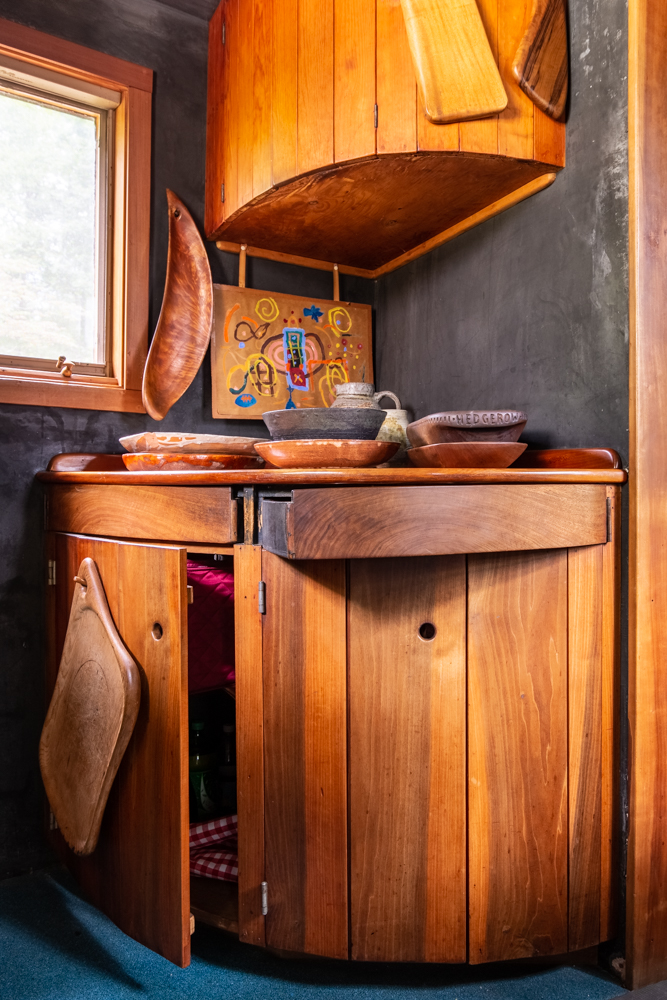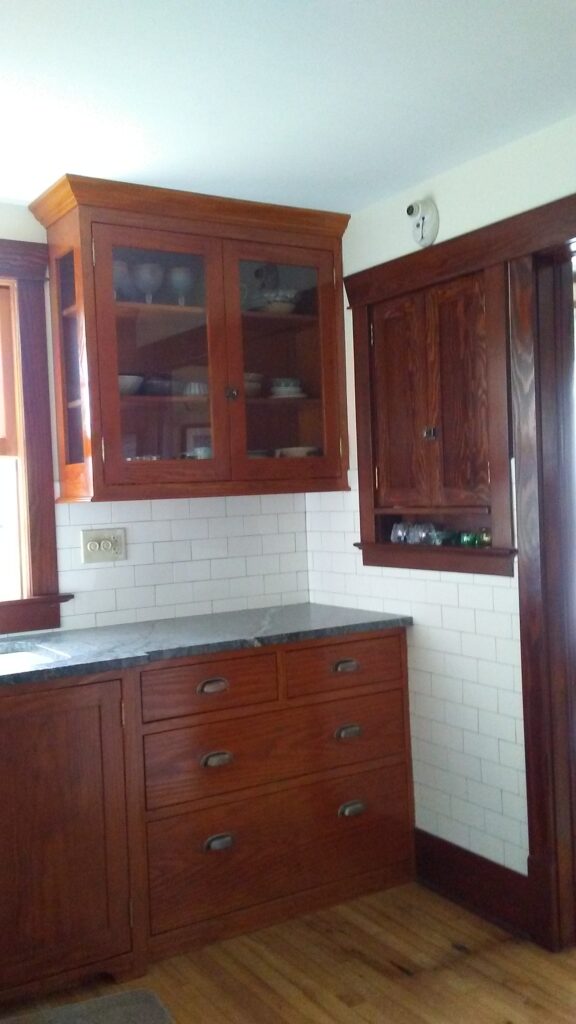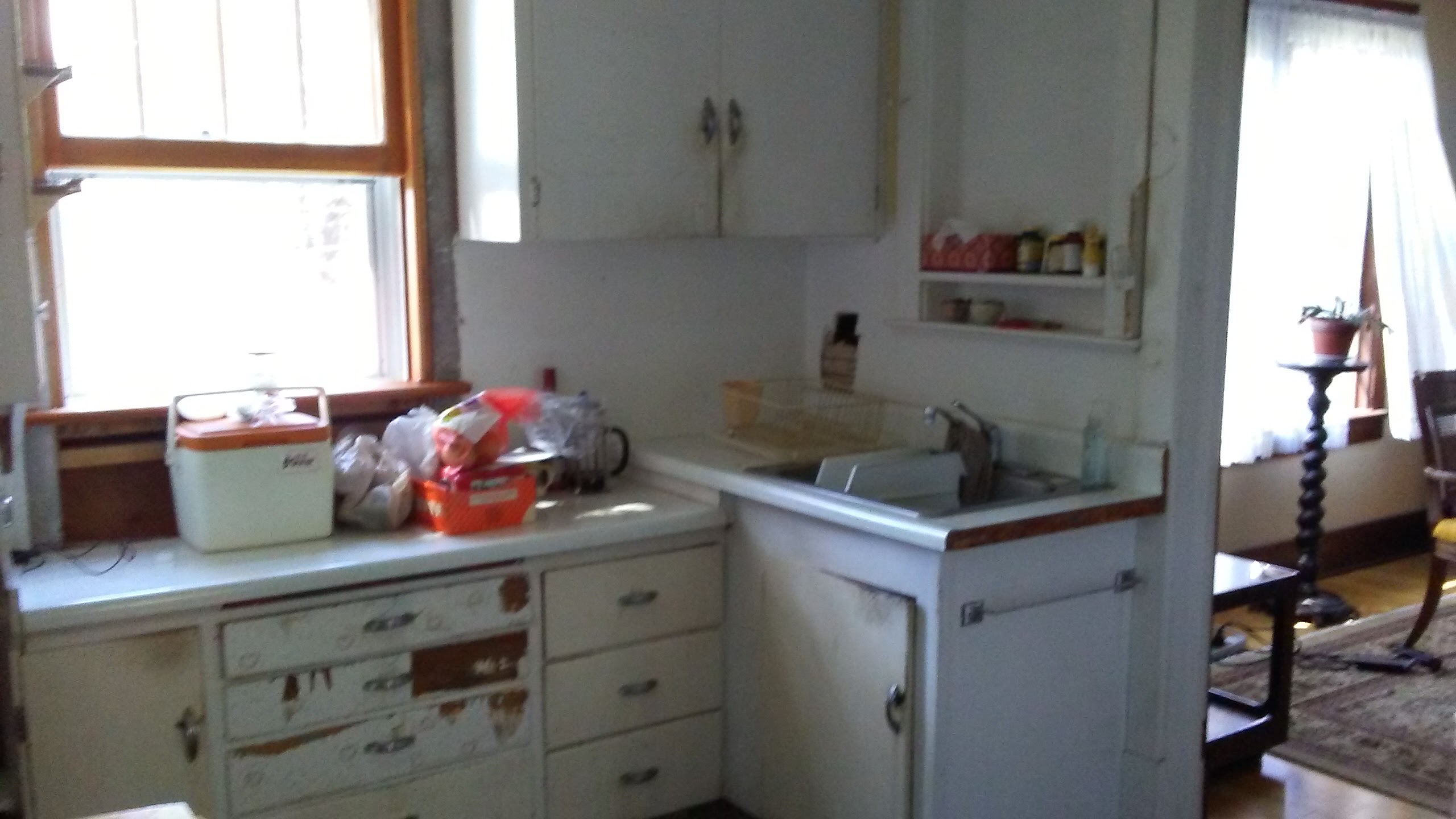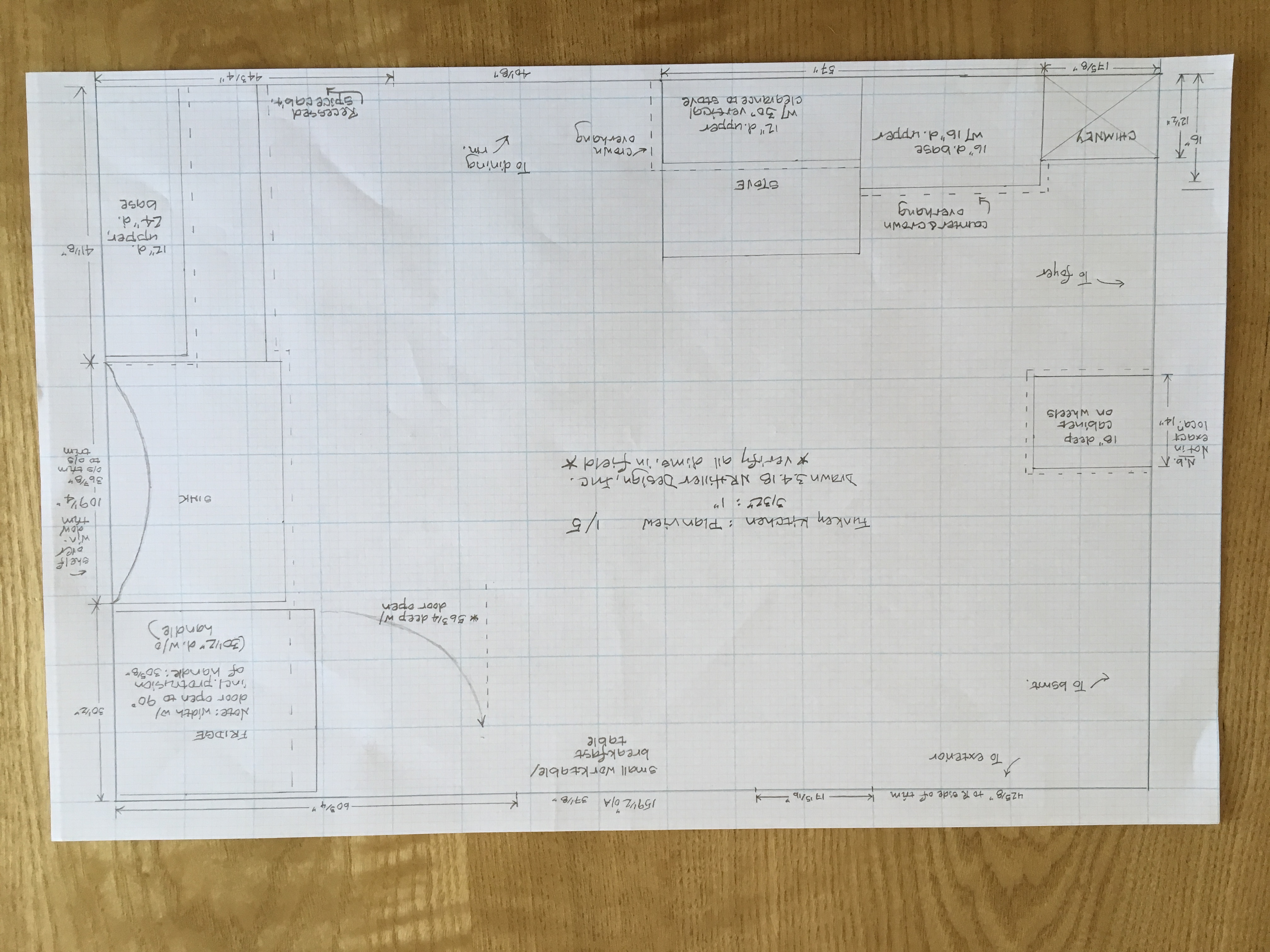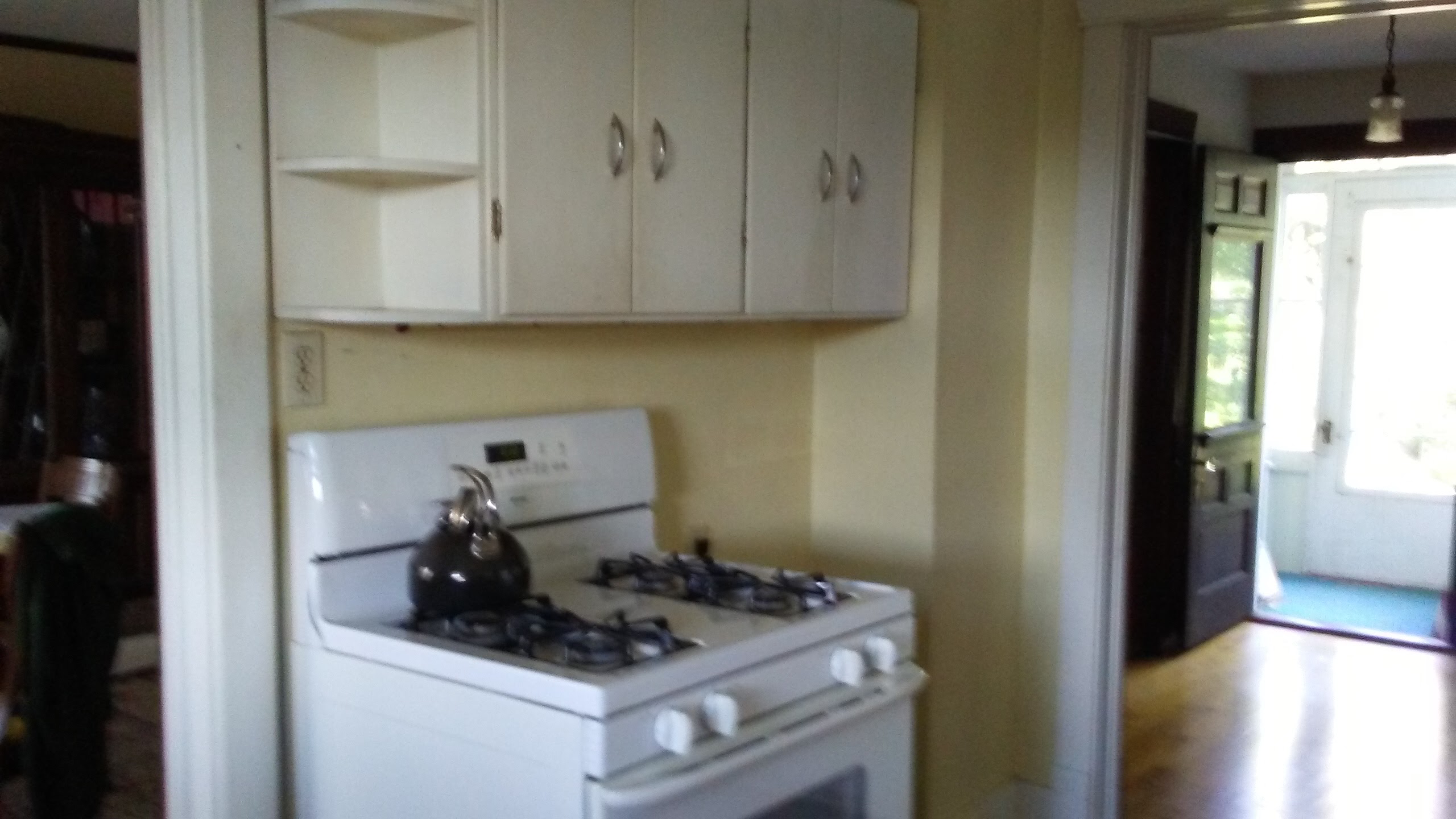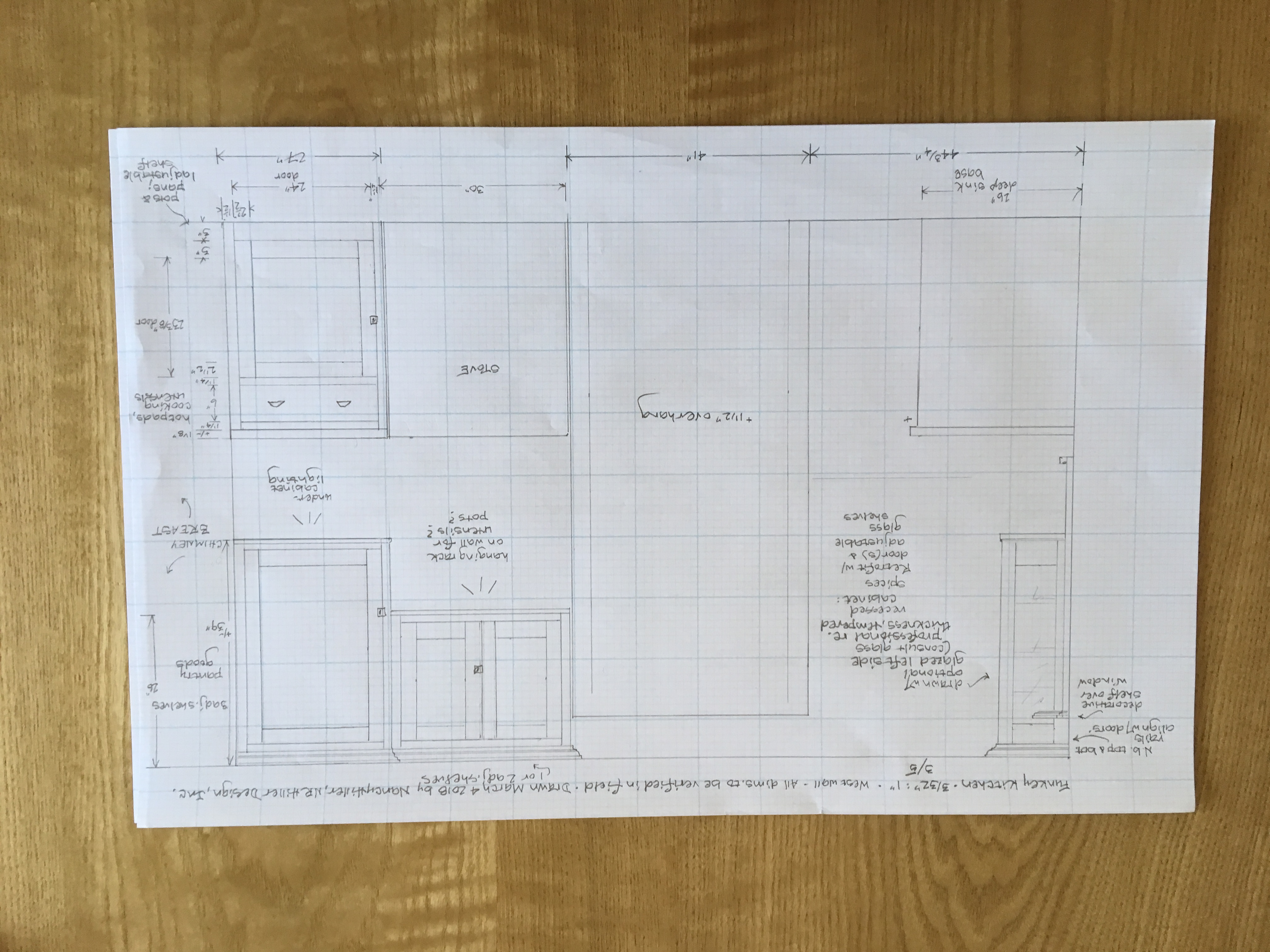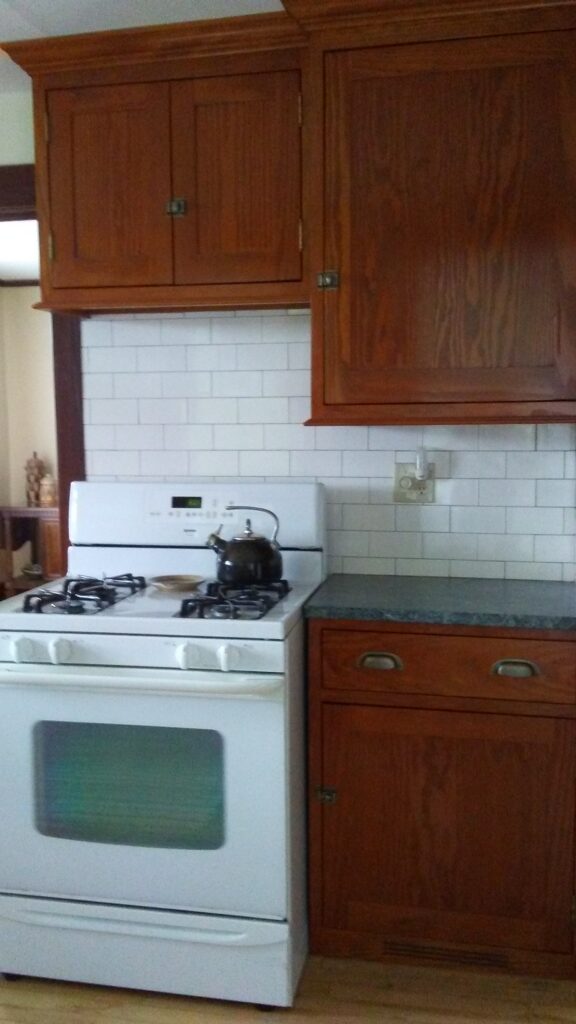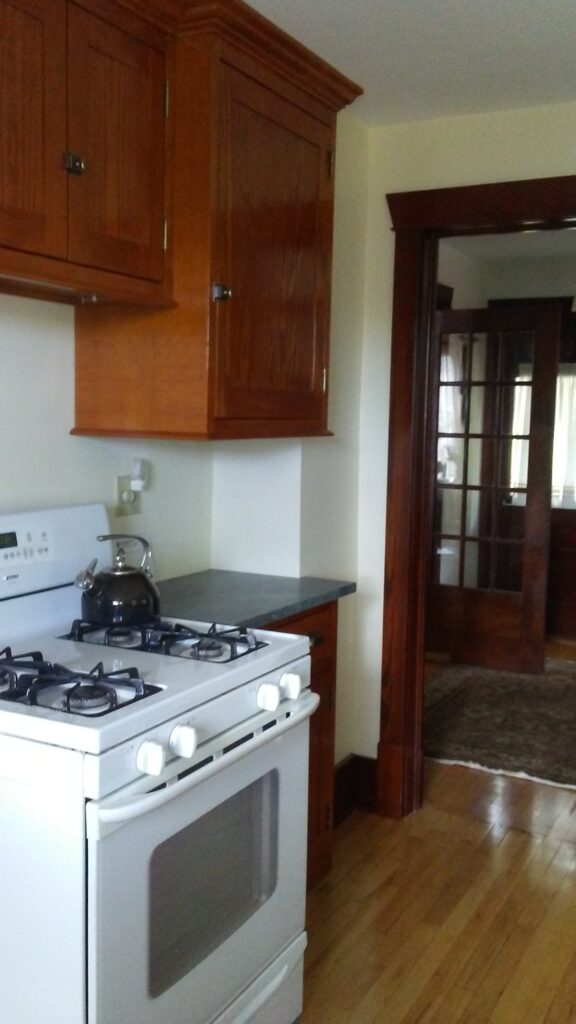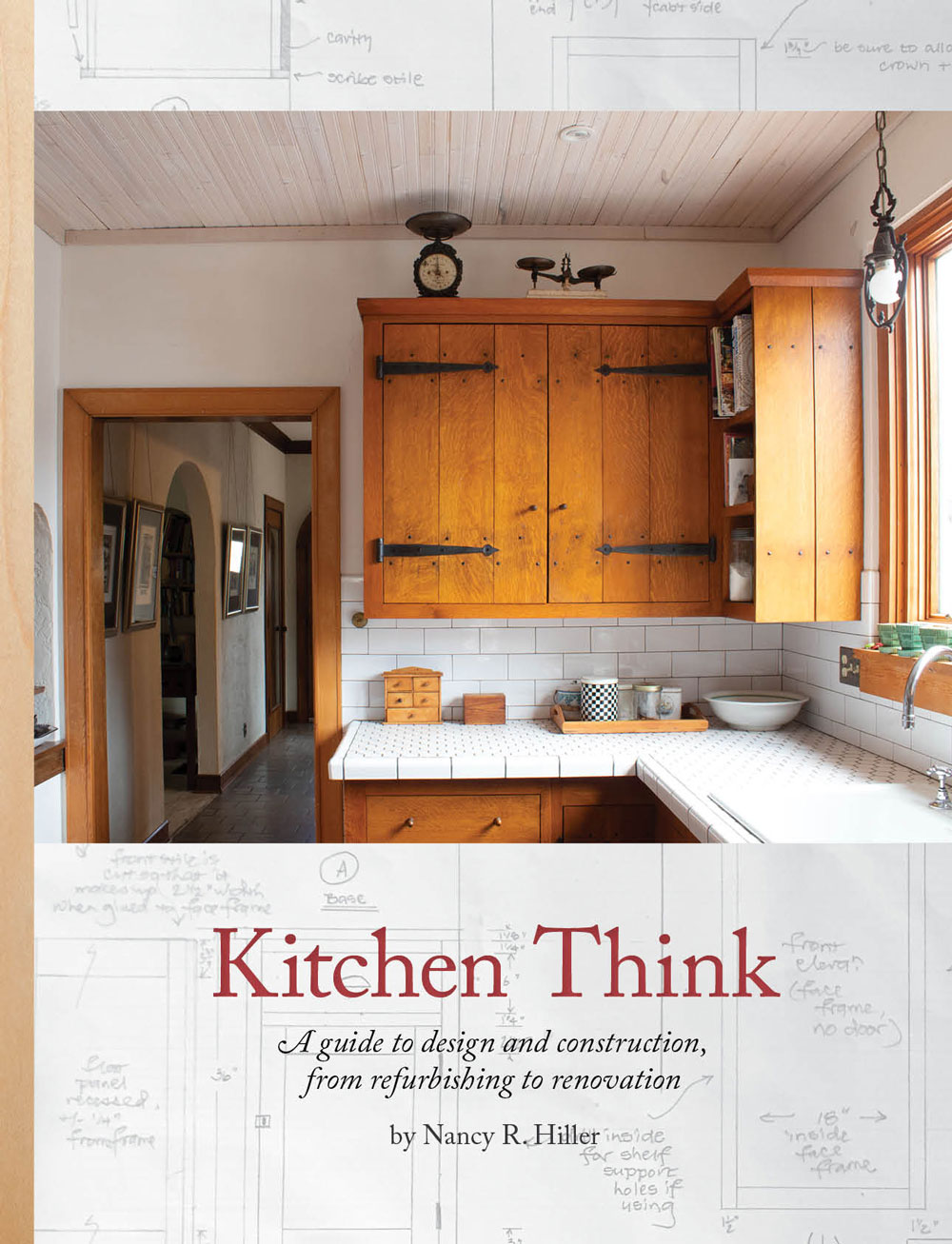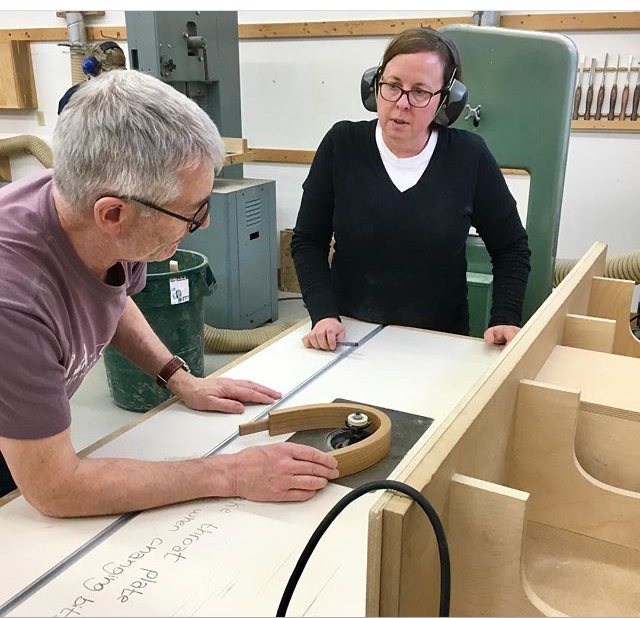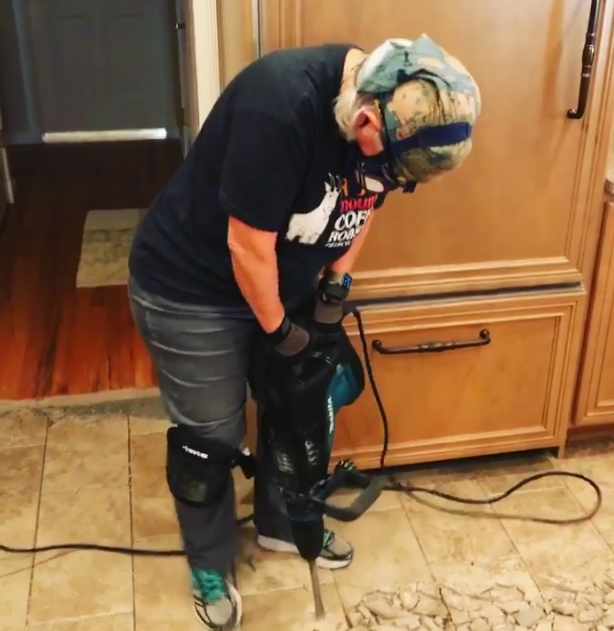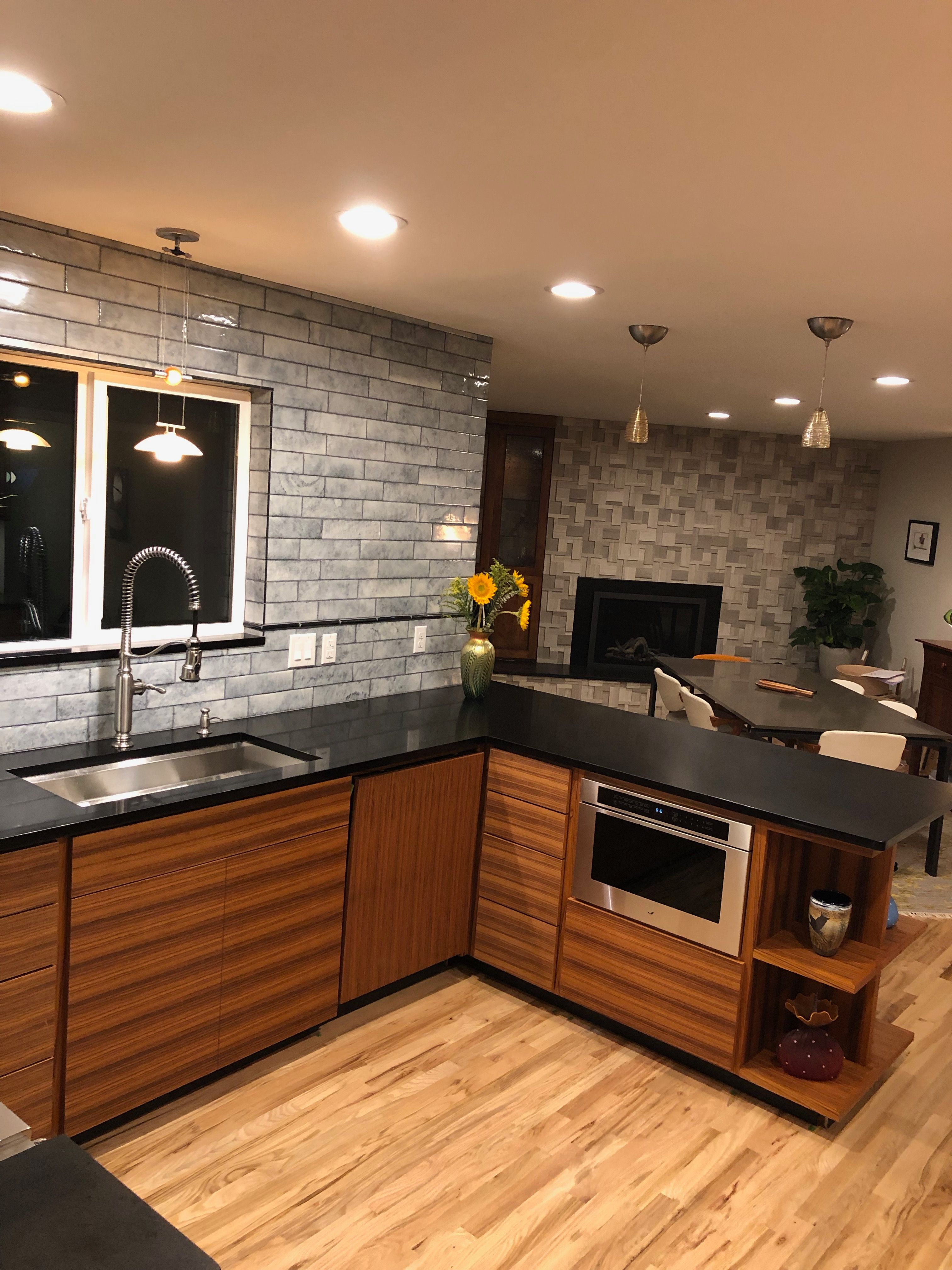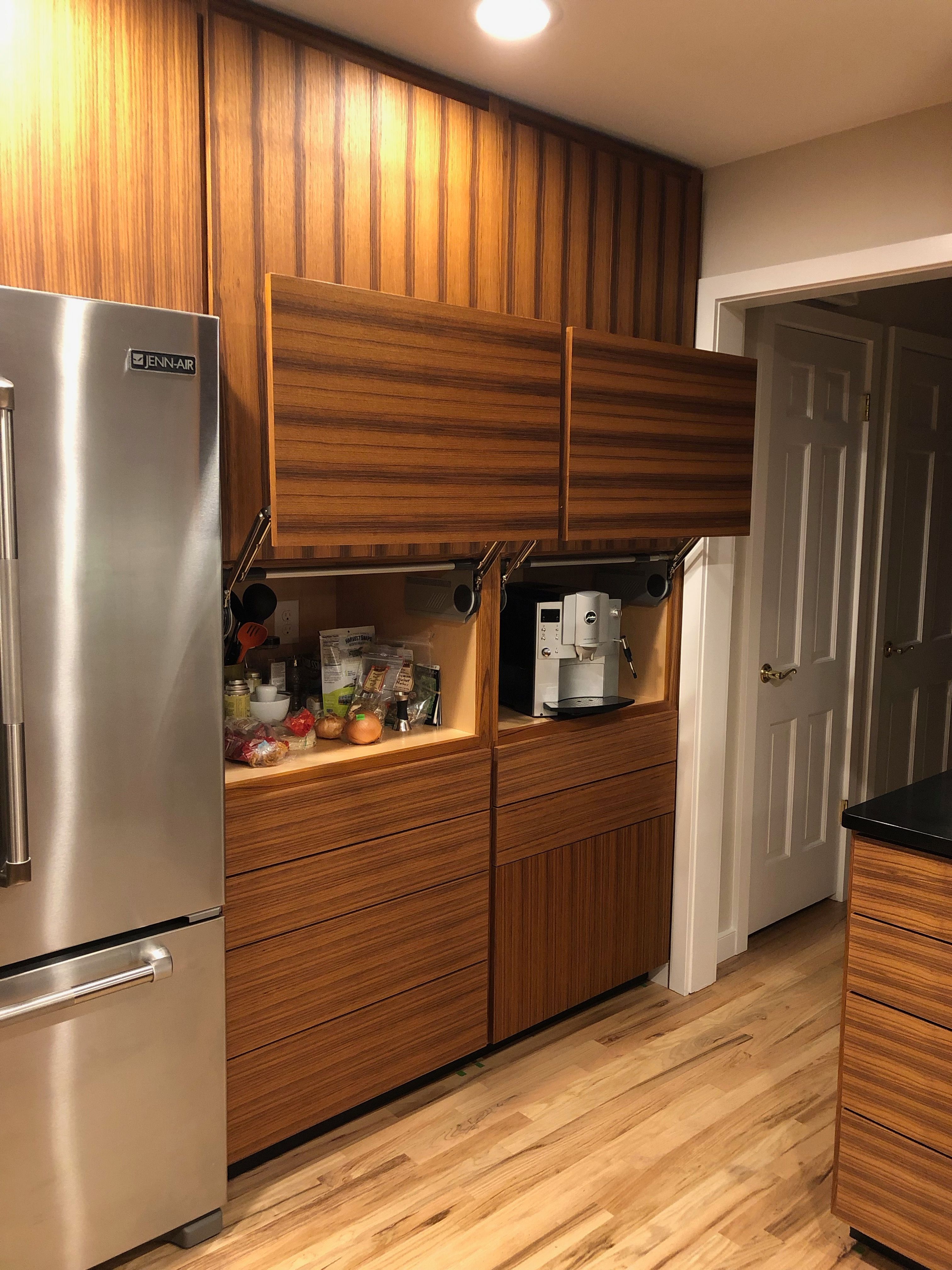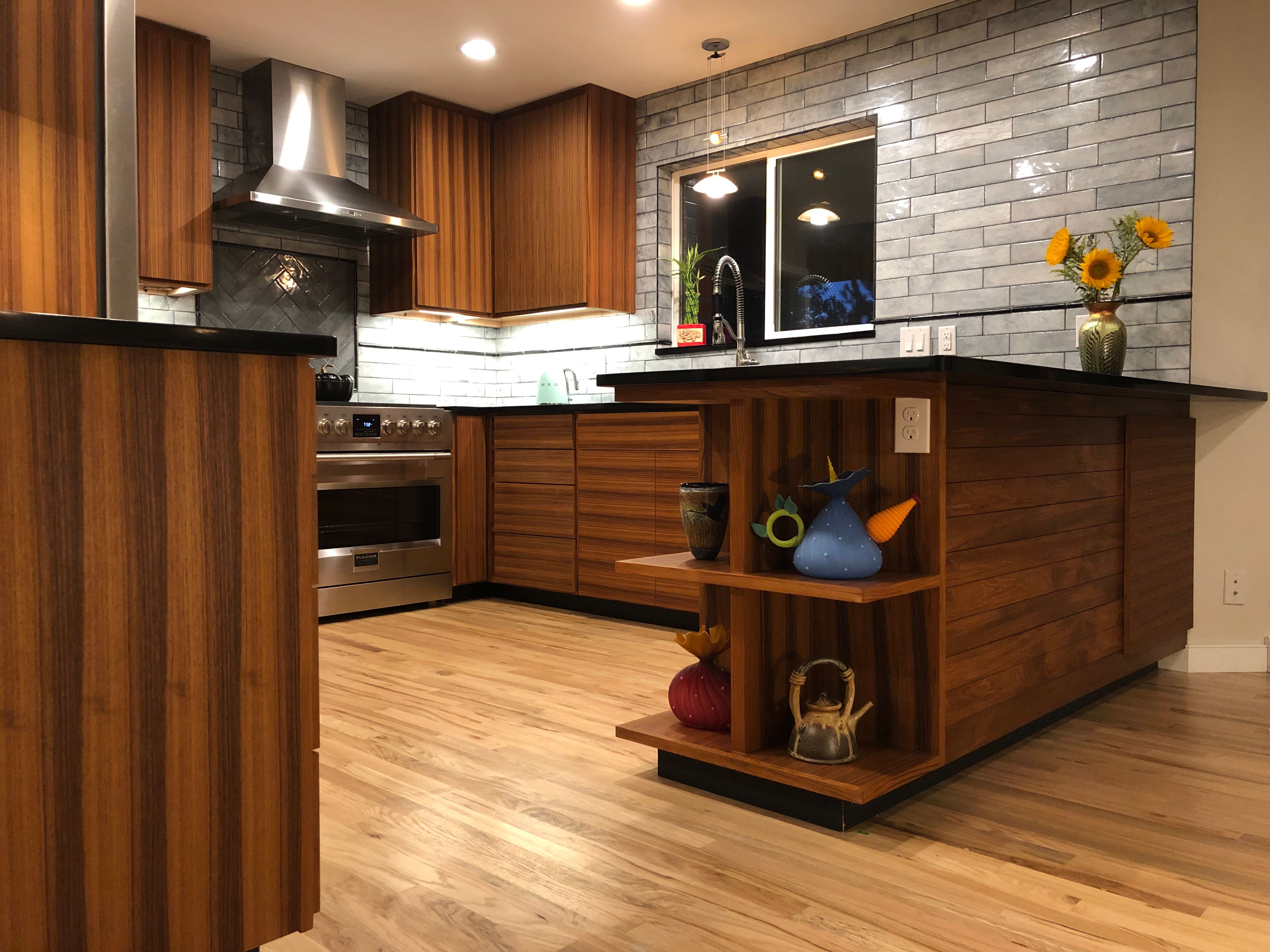
I can’t bring myself to write a post about completing a job and welcoming our clients home without expressing heartfelt sympathy to all those who have lost their homes, and more, over the past few days to fire or financial devastation. Making things – whether furniture, books or buildings – is a source of joy. Seeing them happily used is an honor. Seeing them destroyed is heart breaking.
Yesterday we finished the kitchen I’ve been tracking here in occasional posts, and the Robinson family moved home. The job took much longer than usual, thanks to the pandemic. We’d planned to do the bulk of the work while the homeowners were in Europe, where Ben Robinson was scheduled to spend a good chunk of the summer with students. When reality put the kibosh on Plan A, we discussed Plan B: the family could live at home, cooking on an outdoor grill, and we’d seal off the kitchen workspace to keep construction dust (and droplets) to ourselves. Then we realized that wouldn’t work, either – the project included reworking the full staircase to the finished basement, as well as the steps to the upper level, and replacing the front and kitchen doors. In the end, Ben and Jenny took their three children, two cats and much of their kitchen’s contents to a rental, and then another. (There was more than the usual rental property available for sublet this summer, as many students at Indiana University-Bloomington had left town due to the pandemic.)
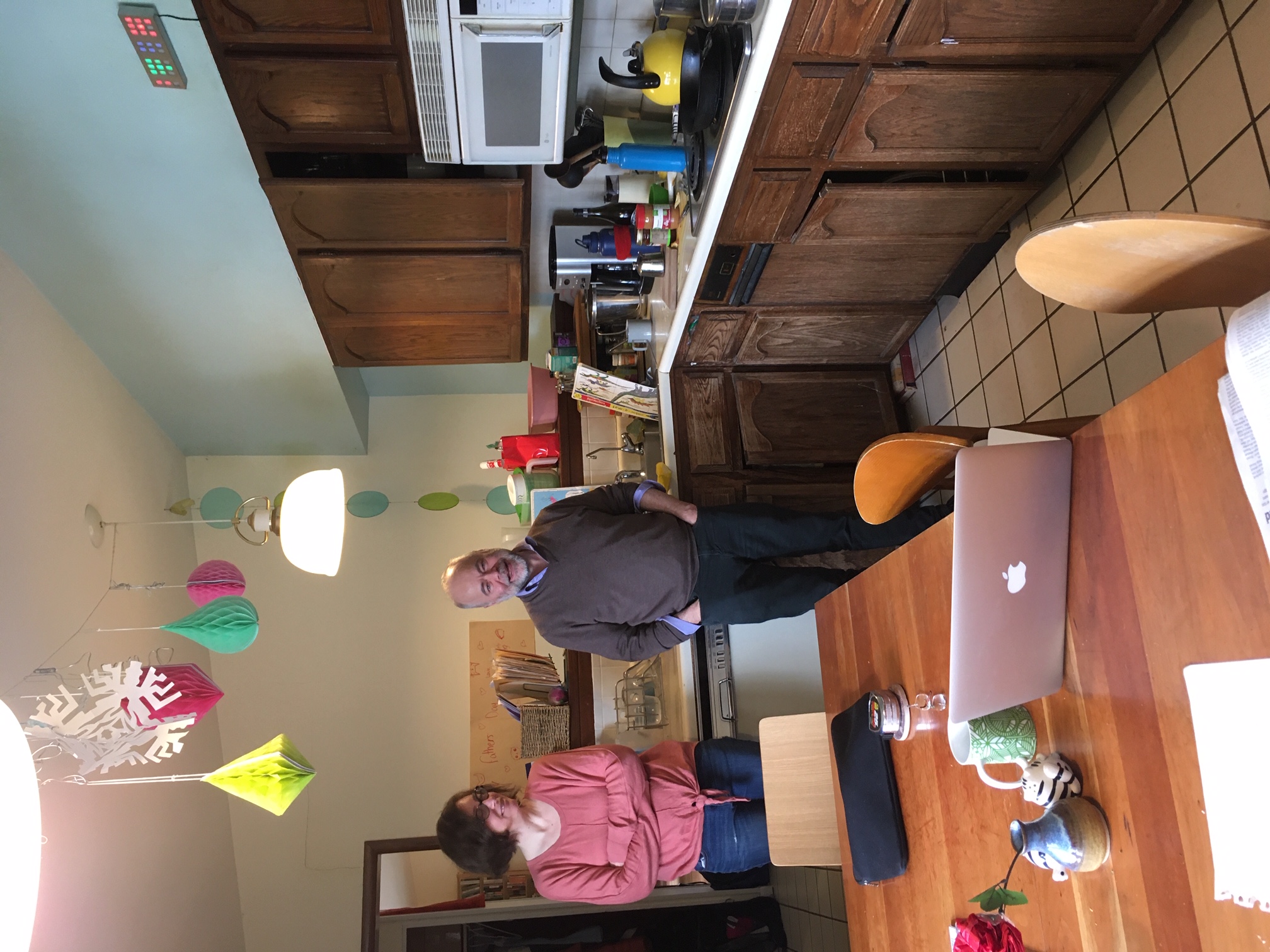
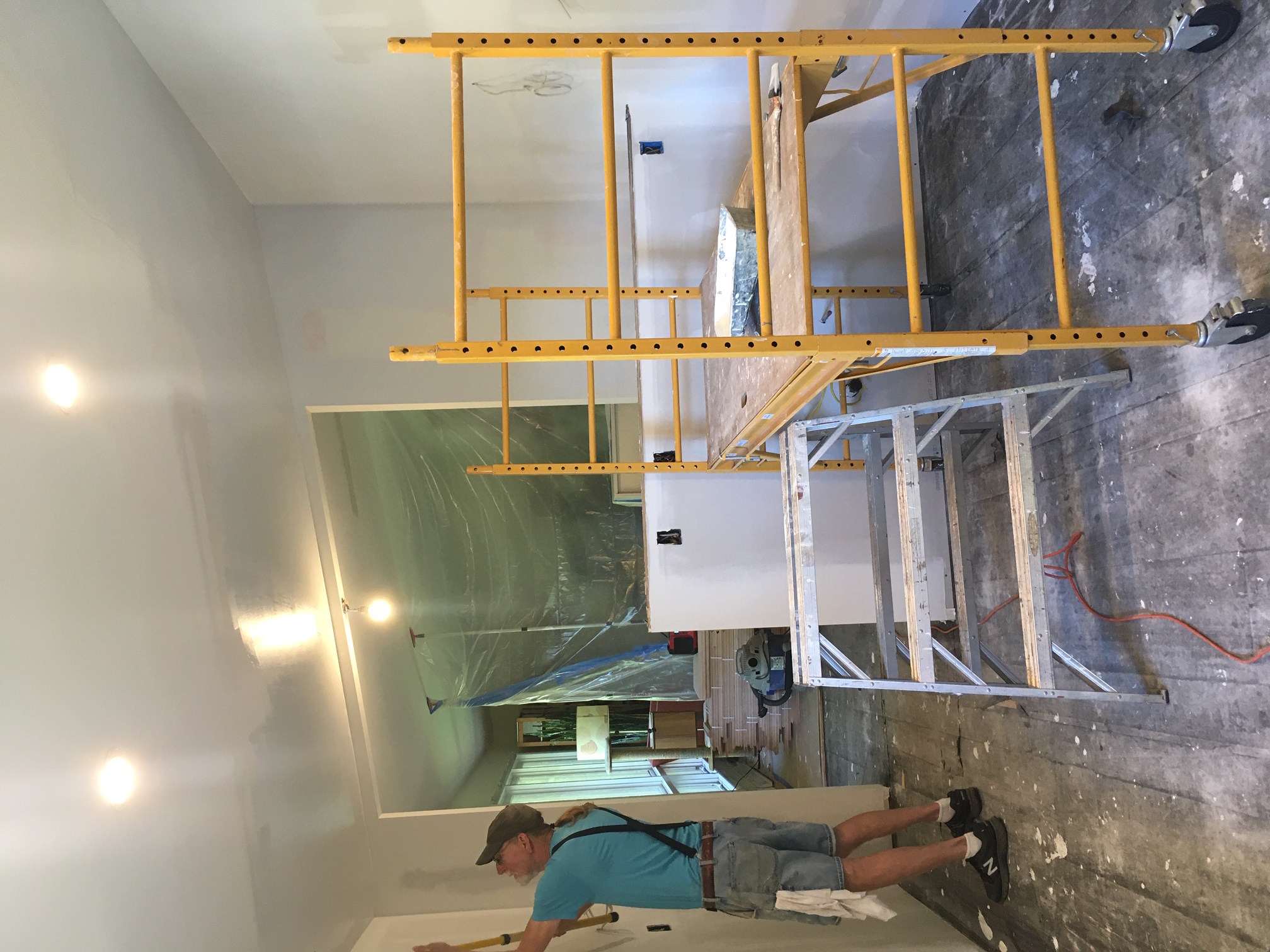
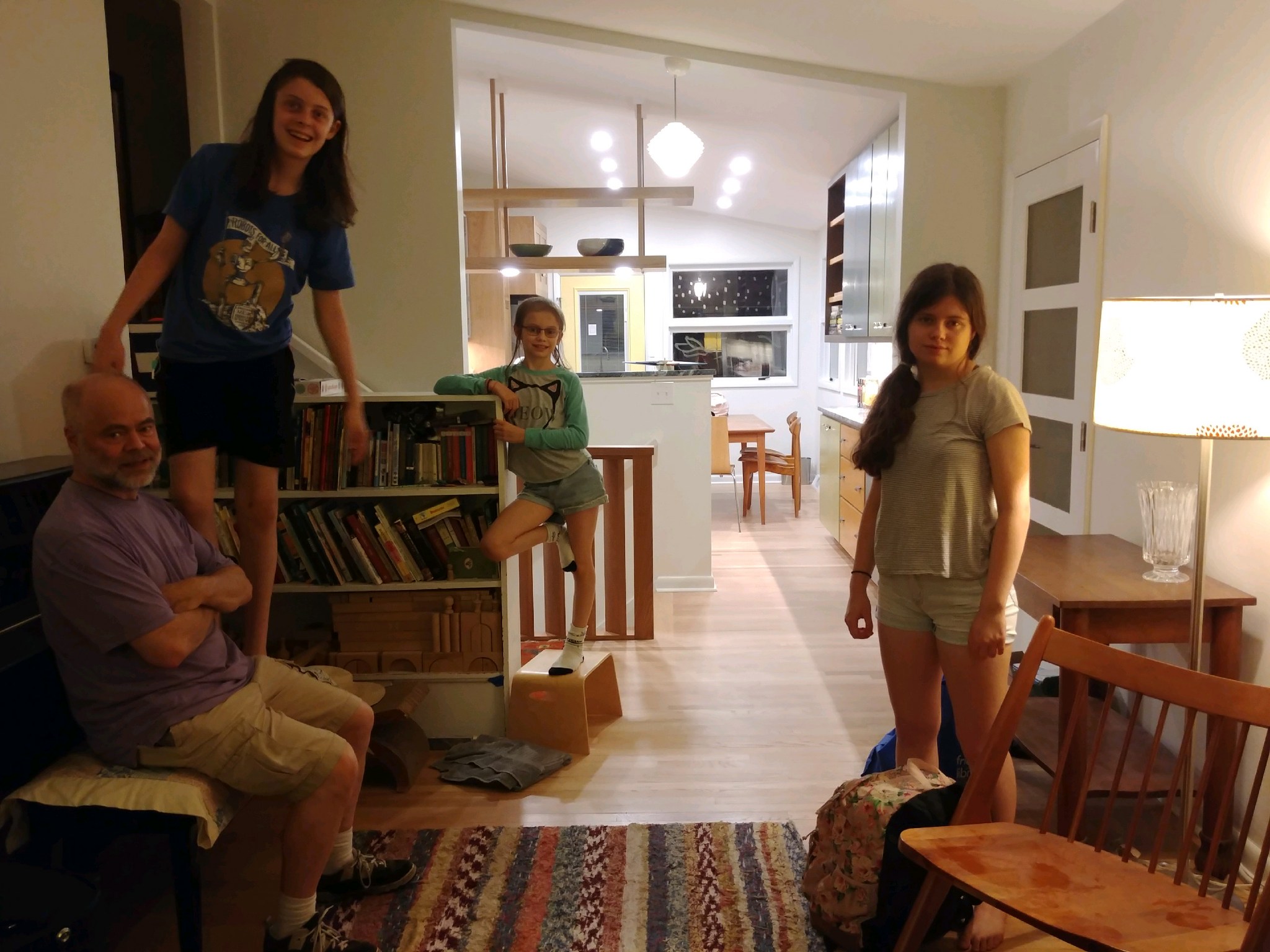
Here are a few more pictures from before, during and after, followed by a list of sources and suppliers.

A pair of shelves with integrated lighting defines the kitchen from the living room now that part of the wall between them is gone, while offering storage and display space. (I’ve written two posts about how I built these and how we installed them at the Fine Woodworking blog. The first is here. The second will be published there soon.)
We based the design of the white oak baluster and railing on an original screen at the mid-century home of some good friends; the angled slats are spaced for code compliance. The small white oak door on the wall opens into a cavity at the inside corner, replacing a blind corner unit that previously occupied the space.

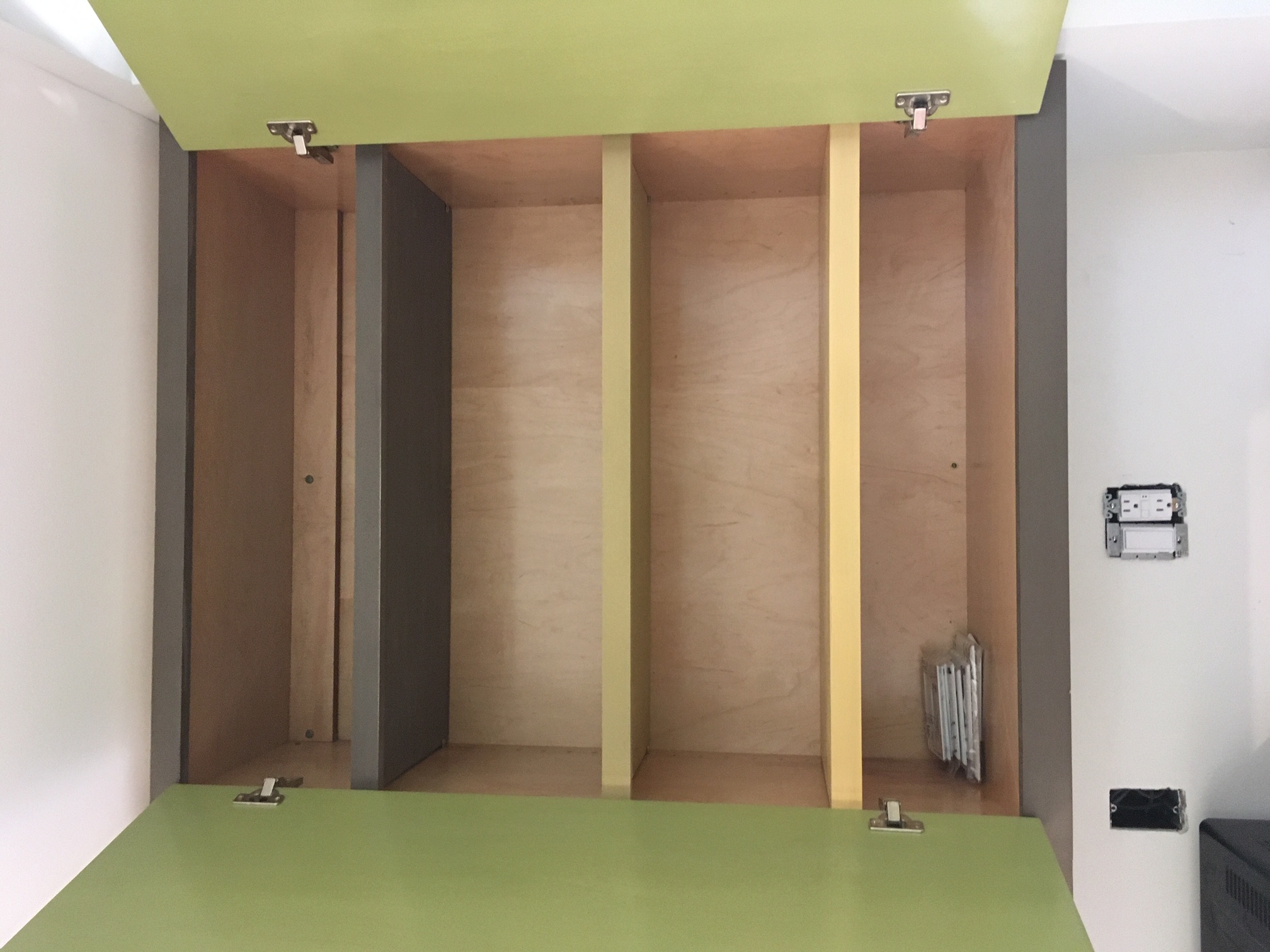
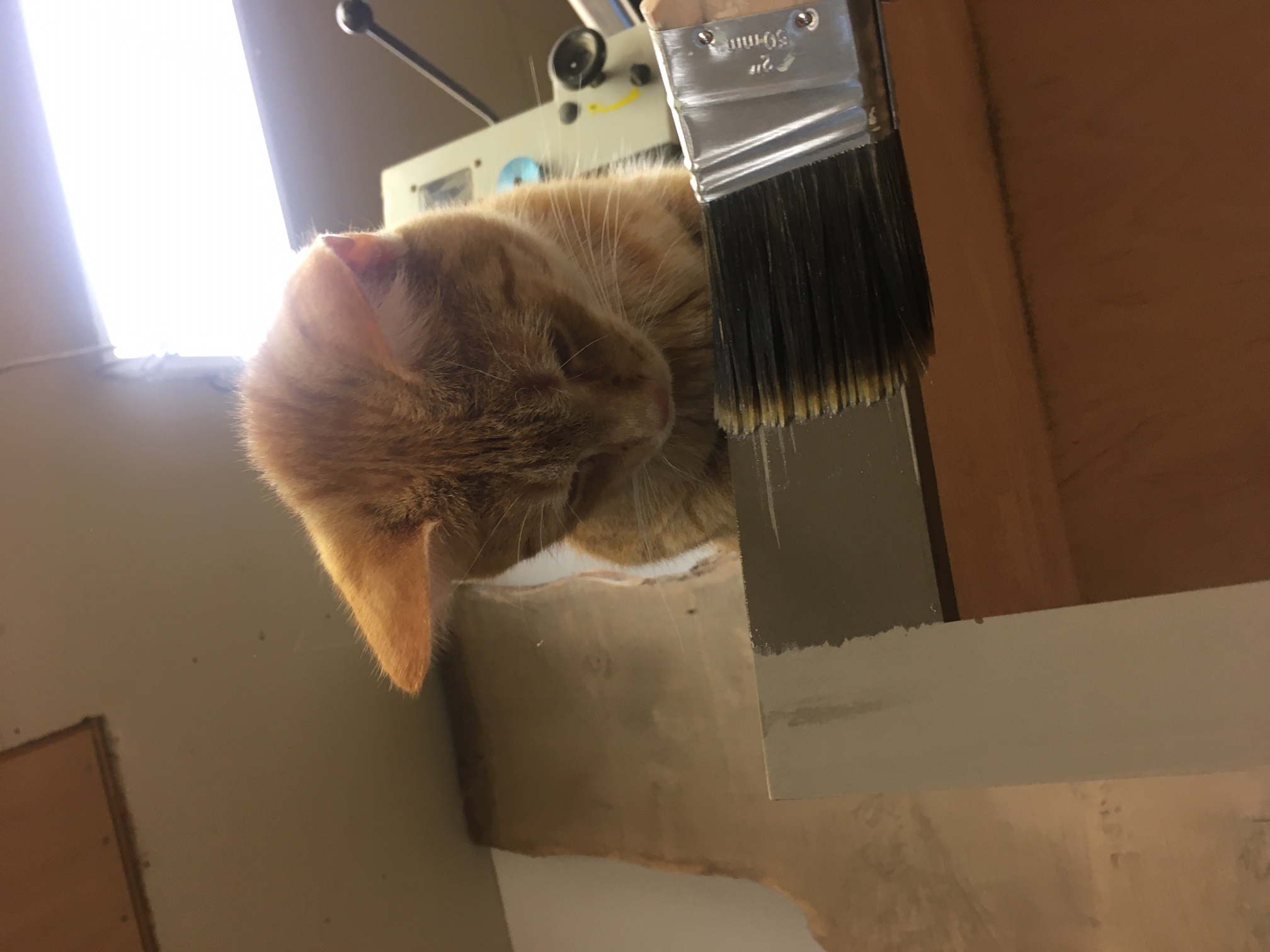
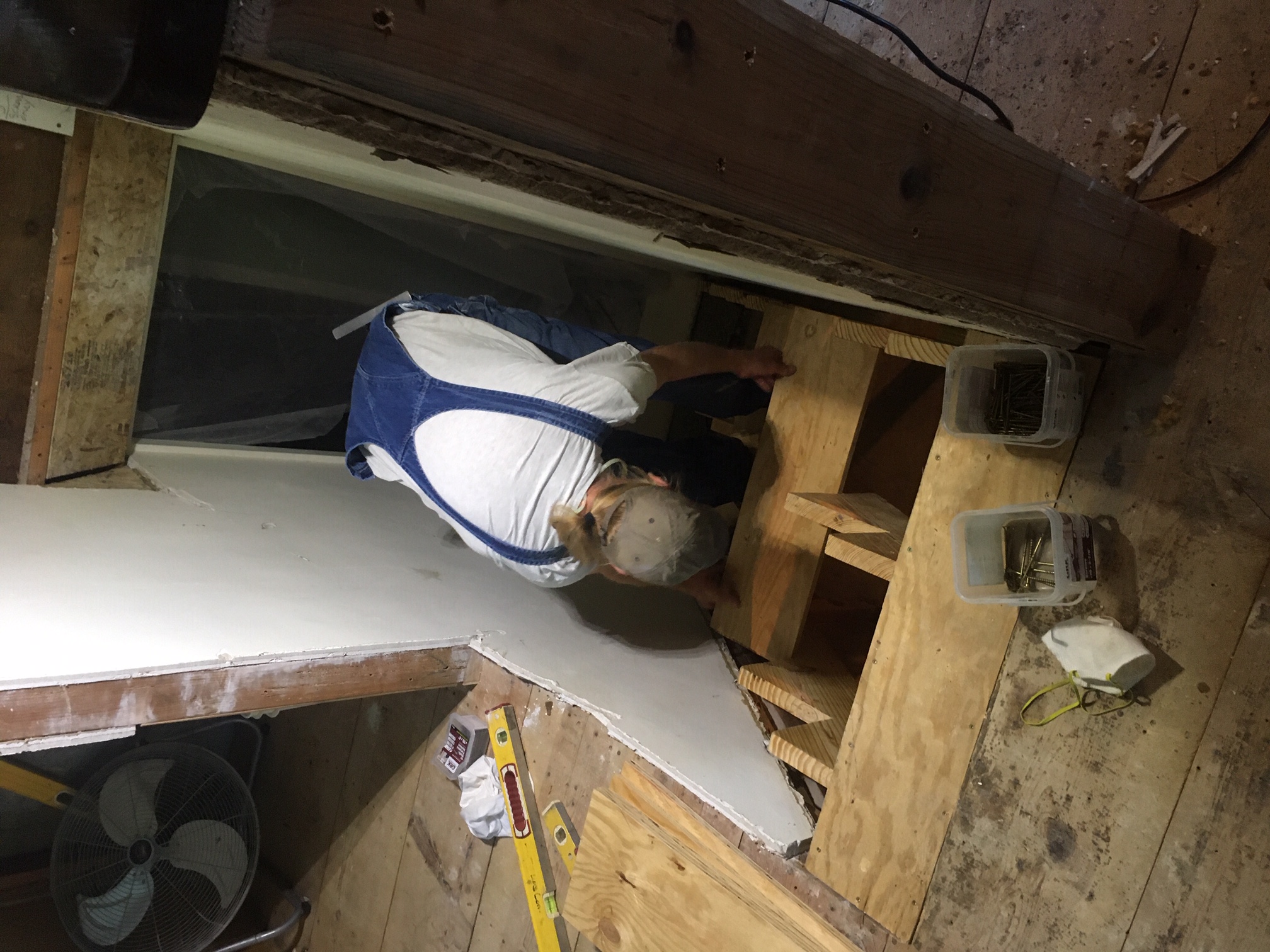
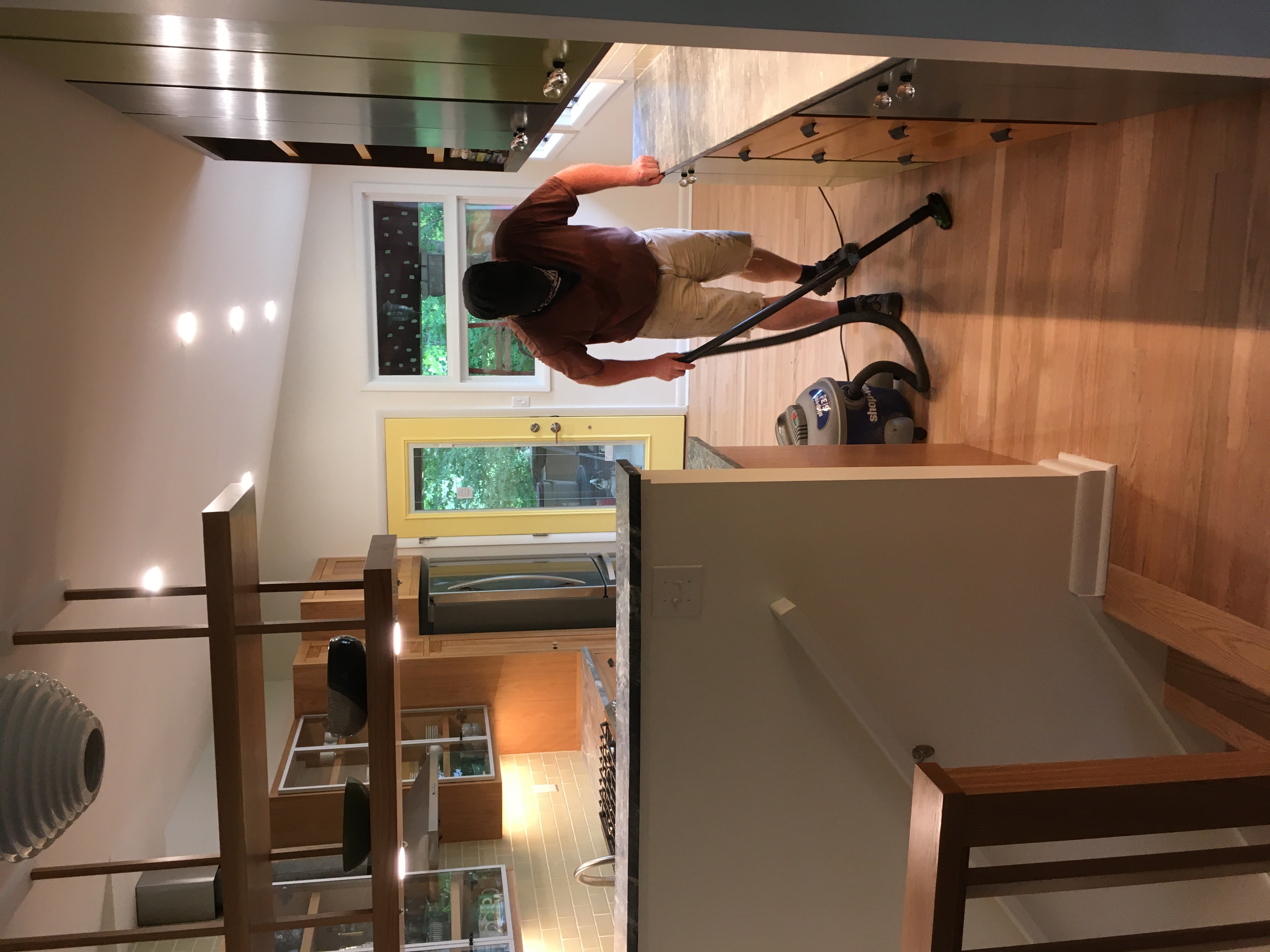
The passageway between the living room and kitchen is now about 1′ wider than previously, which makes moving from one space to the other far more comfortable – you no longer have the sensation of passing gingerly alongside a mountain crevasse. To get the extra floor space, Mark reworked the stairs to the finished basement, moving them forward (toward the basement). He rebuilt the stairs with white oak treads and risers.
A glazed door to the carport brings more light into the room.
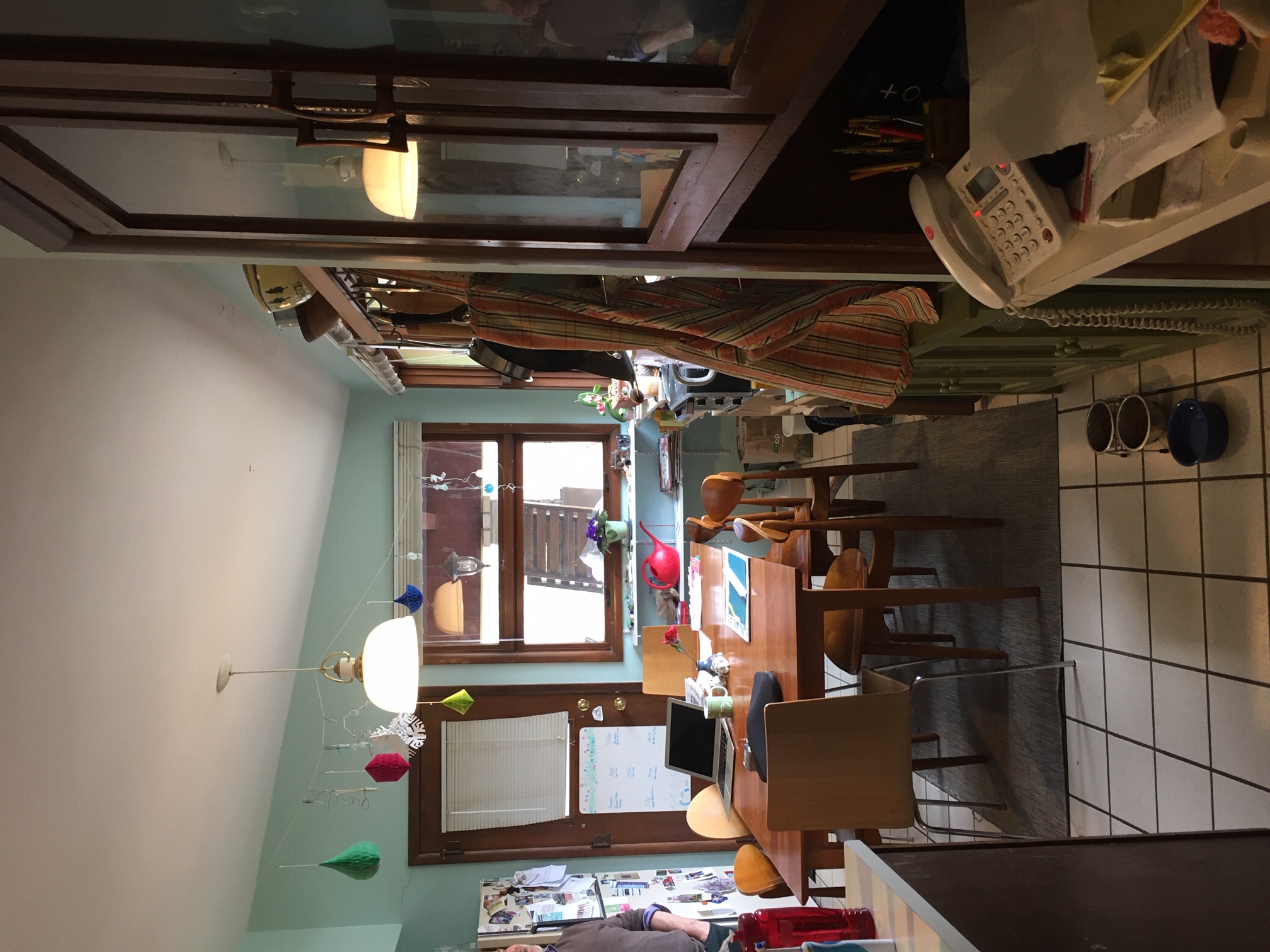
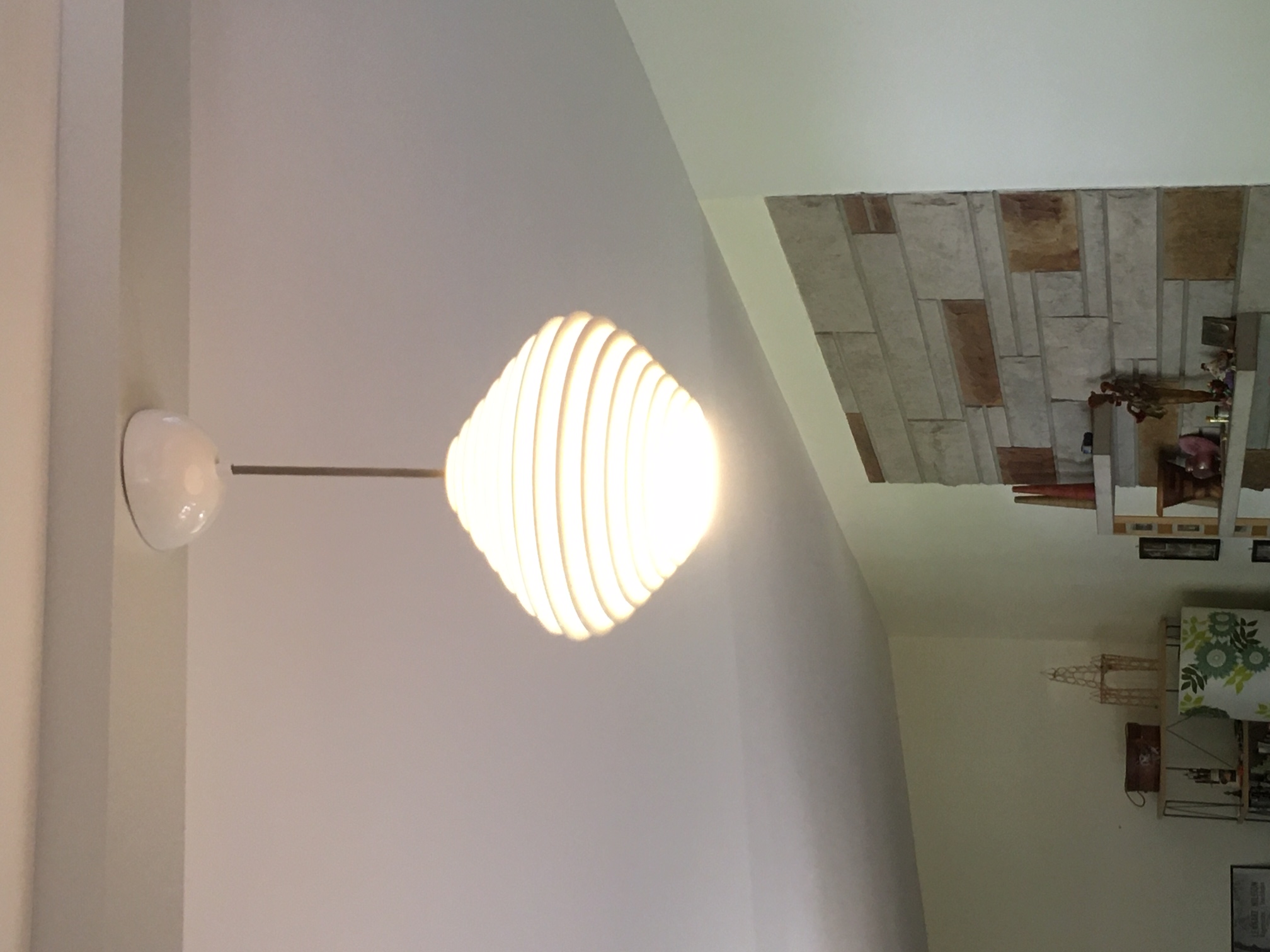
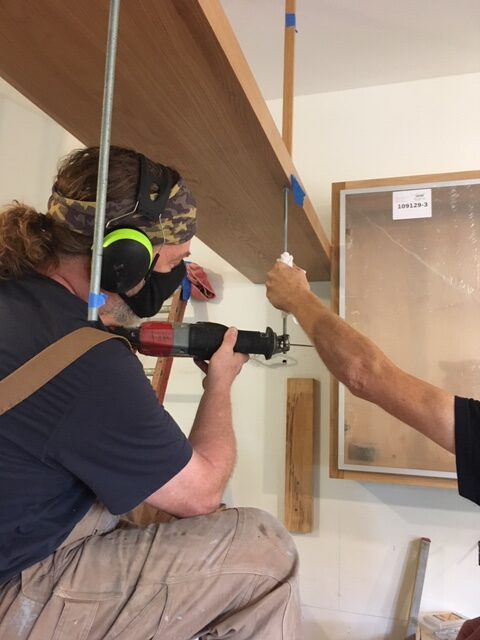
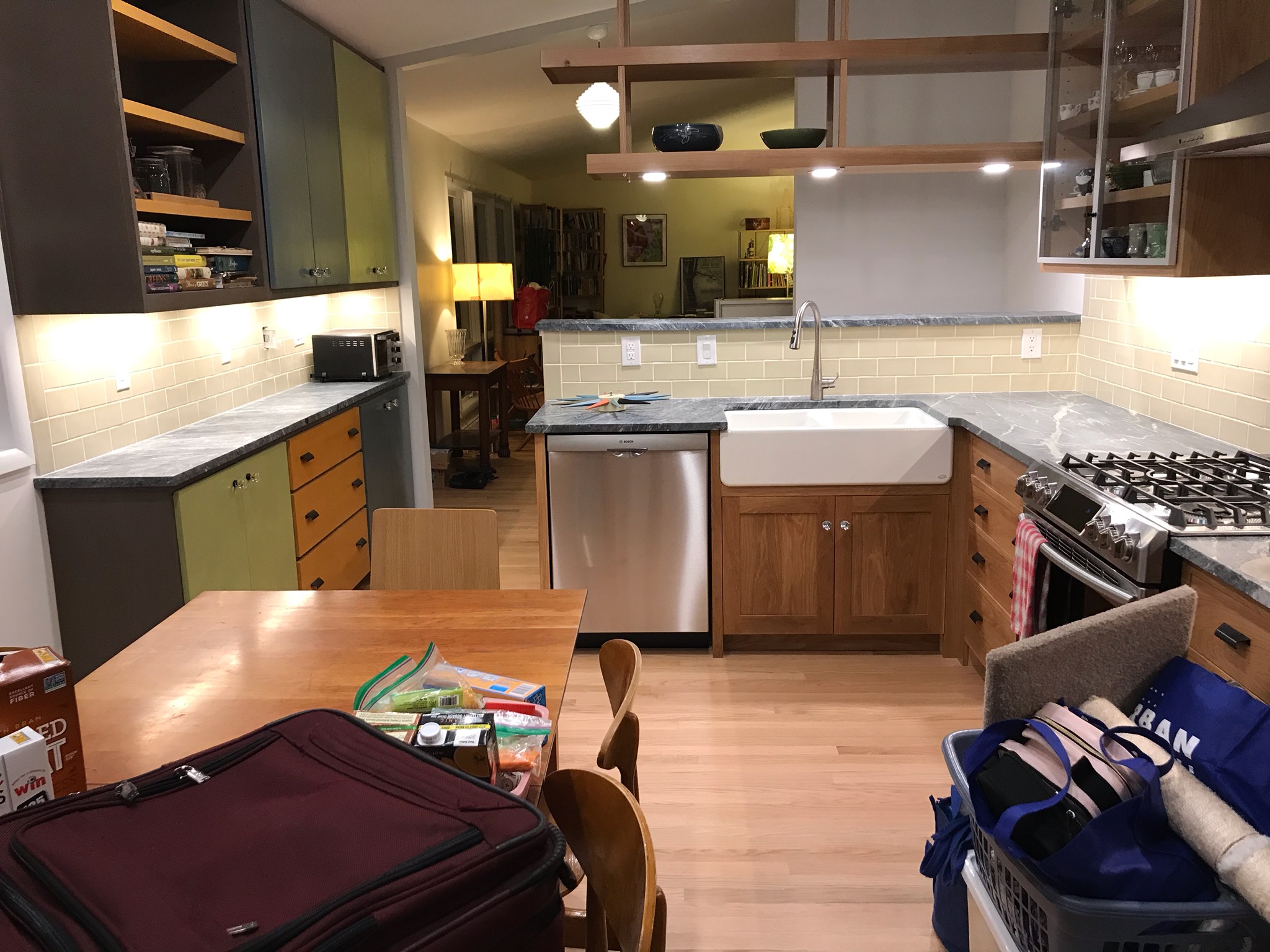
Sources and suppliers
- General contractor: Mark Longacre Construction, Inc.
- Flooring installation, sanding and finishing: Barry Kay
- Oak flooring: Indiana Hardwood Specialists
- Plumbing: Mann Plumbing
- Electrical: Isaiah Merriman, Bloomington Heating, Cooling and Electrical
- Wall and trim paint: Sherwin-Williams
- Milk paint: The Real Milk Paint Co.
- Aluminum-framed glass doors: Element Designs
- Soapstone counters: Quality Surfaces
- Tile: Crossville “Handwritten” series in “Penpal”
- Cabinet knobs and pulls: Schoolhouse Electric
- Cabinet finish (on oak cabinets): Sherwin-Williams conversion varnish
- Tile installation: Rusty Robertson
- Pendant light fixture between living room and kitchen: Original BTC
- Cabinet lumber and plywood: Frank Miller Lumber
- Cabinet spraying: David Willibey, Bloomington Coatings
- Cabinet design and building: NR Hiller Design, Inc.
Other posts in this series are here.
— Nancy Hiller, author of “Kitchen Think” and “Making Things Work“

